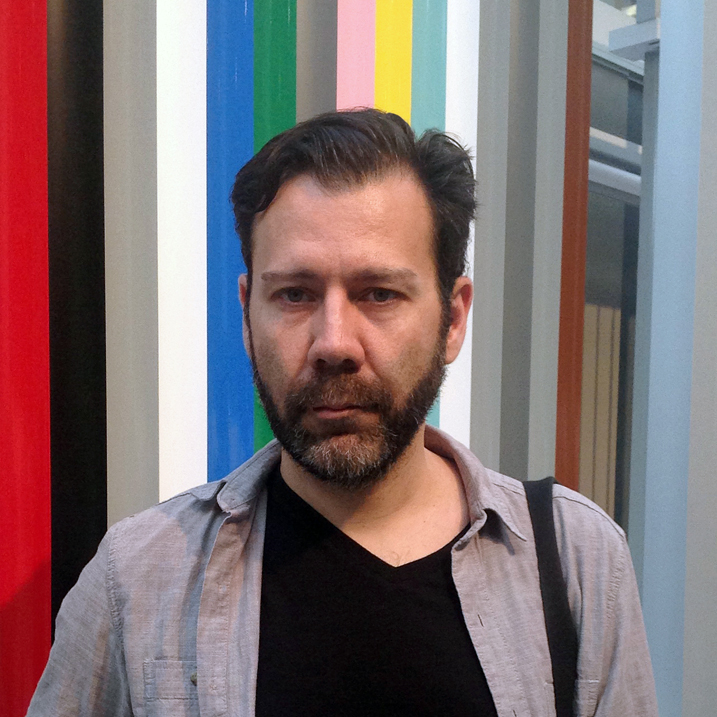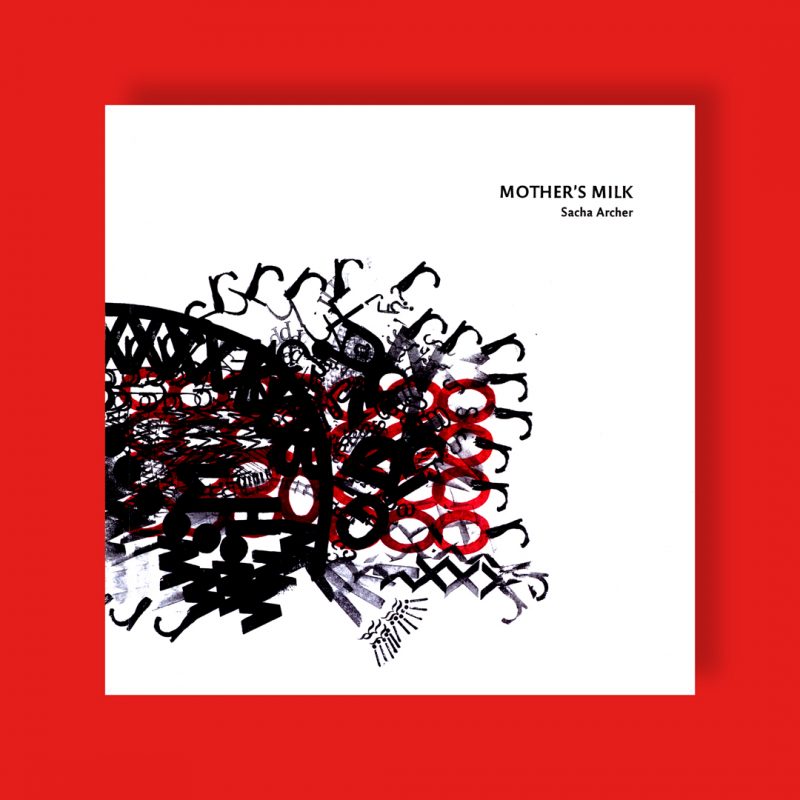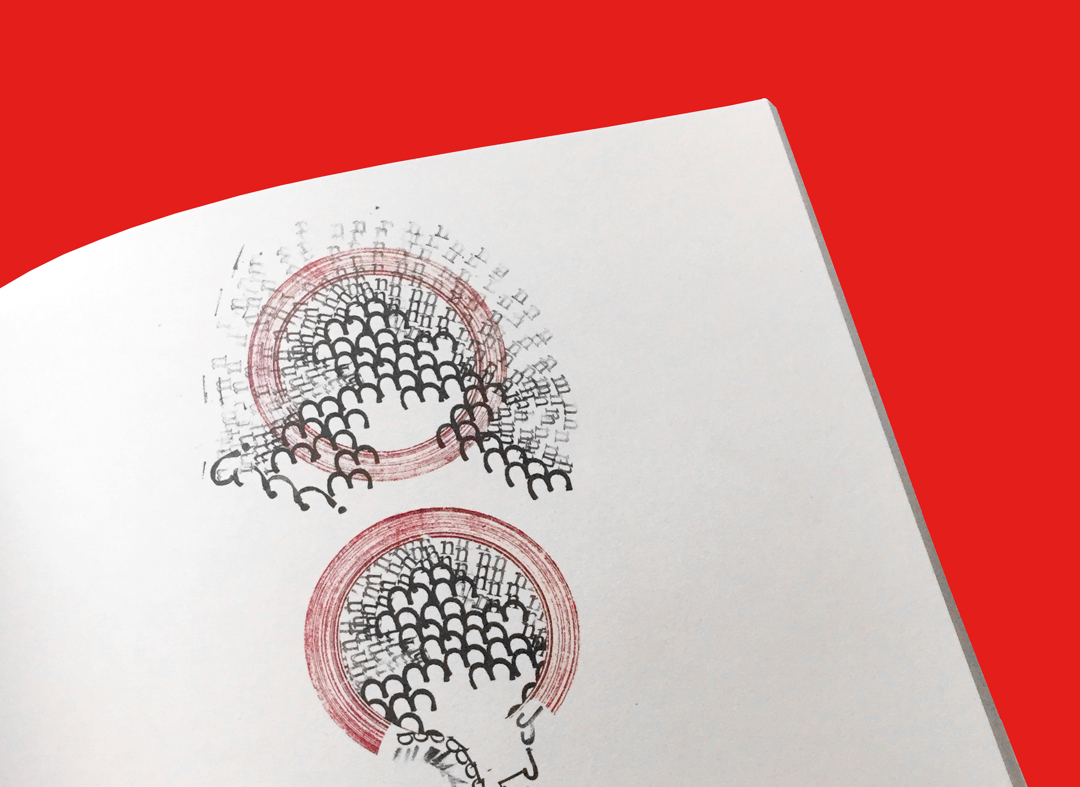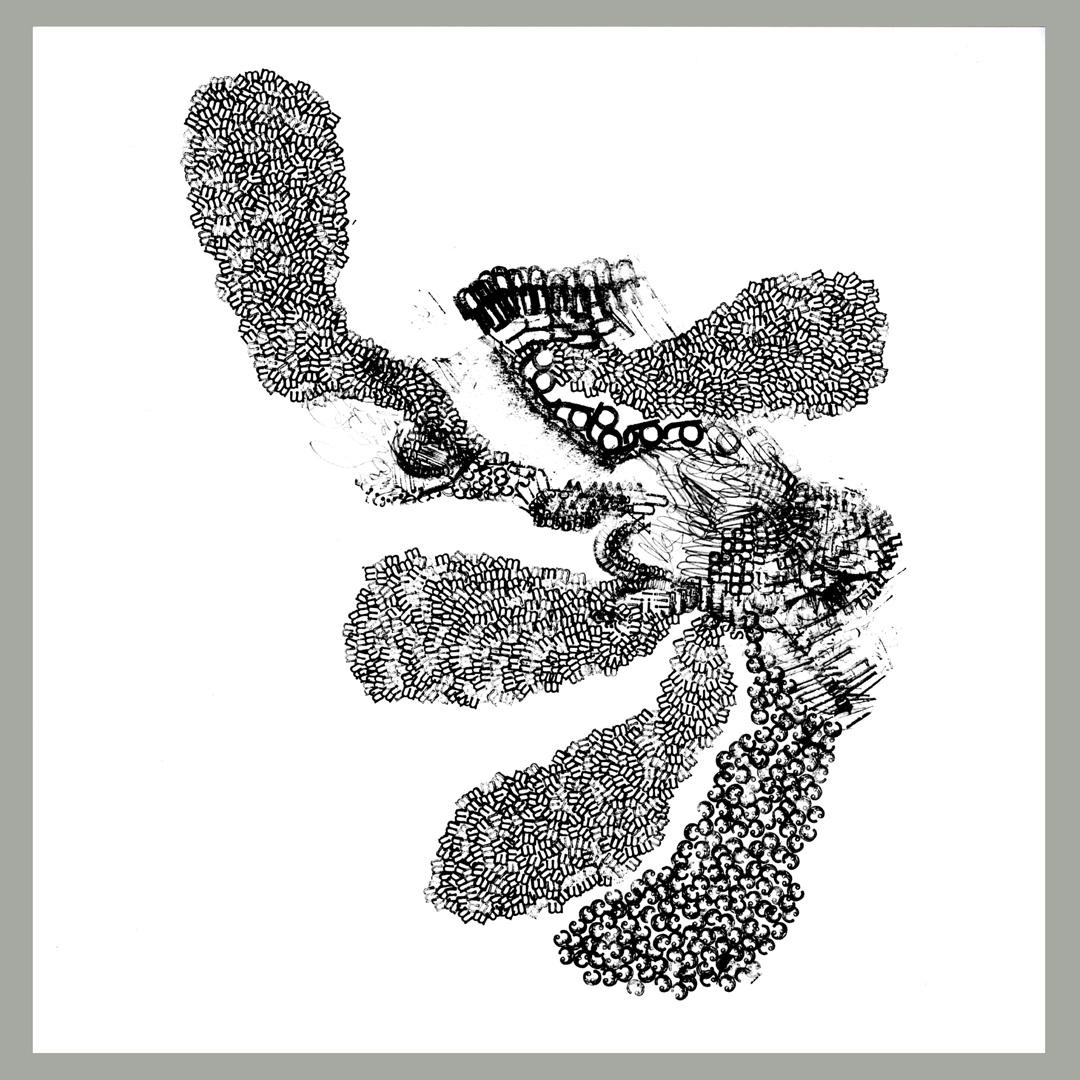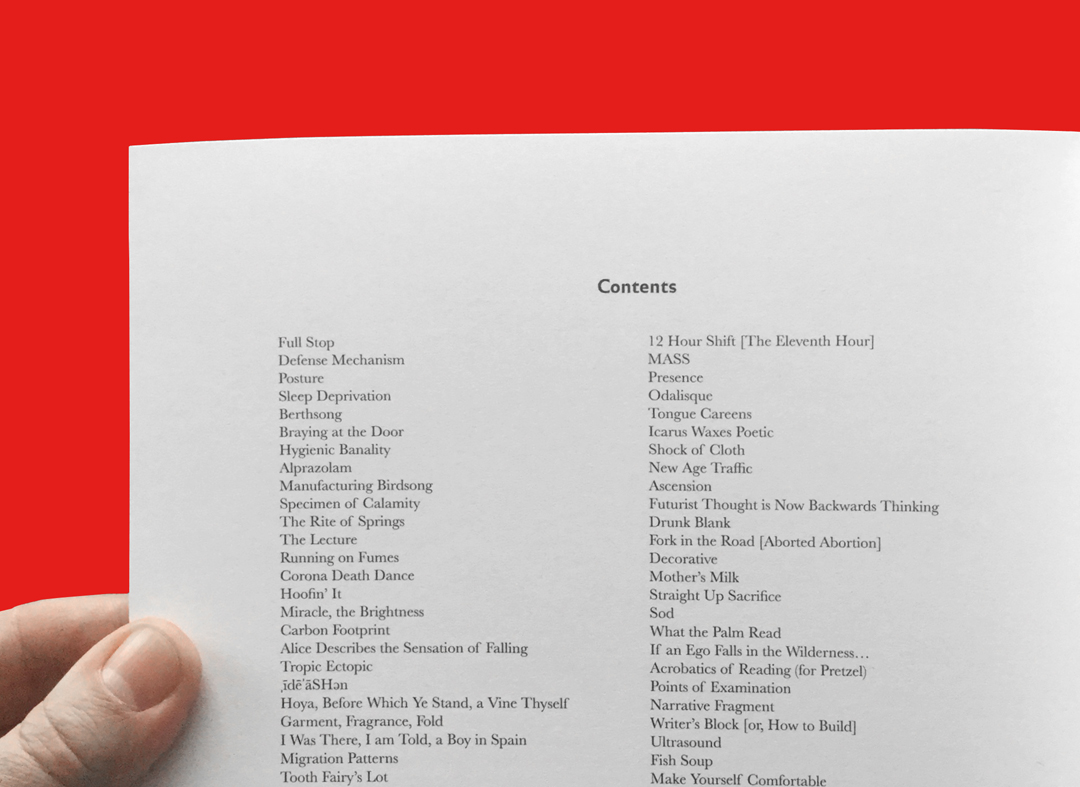USEREVIEW 018: Dwelling in the Organic
Mark Laliberte transliterates visual poems into text in this traditional review of Sacha Archer’s third full-length collection, Mother’s Milk (Timglaset Editions, 2020). Balancing considerations of both the sensory impact of the works with their articulated thematic preoccupations, Laliberte brings his twin literary and artistic expertise to bear in a way that contextualizes and enlivens Archer’s book.
ISBN 978-91-985539-0-1 | 84 pp | €16.00
#CAROUSELreviews
#USEREVIEWEDNESDAY
Mother’s Milk is an essential collection of Canadian creator Sacha Archer’s recent rubber-stamped concrete poems. The bulk of the works in the book were completed in a very short span of time, and released in the spring of 2020, when we all went into lockdown. There is a sense of restless energy here that really pins it to that place and time, but it’s also the kind of substantial creative achievement that is likely to have an existence beyond the present moment. Archer is in full experimental mode throughout, and makes it a point to shift gears often, yet he creates a presentation structure that unfolds in an understandable way: the book is comprised of an opening text, a suite of grayscale concrete works, an intermission, a suite of black & red concrete works, and a closing text, followed by a late-in-the-game table of contents and a short but informative set of endnotes.
The collection is bracketed by ‘Mother’s Milk’ and later ‘Parable’, opening and closing prose pieces that use language in a traditional way before Archer settles in to break it down throughout the rest of the book. These two complimentary texts nudge the reader into Archer’s daily life with immediacy; they are idea spaces — intimate doorways that he situates the remainder of the book between. Out in the real world, Archer is juggling being a father, a husband, a homemaker and an artist, and the concrete works he produces for this collection, he clearly wants you to know, are being informed by this day-to-day domestic existence. The two short tales reveal that there is always laundry to be done, holidays to plan, sleep to chase, children to feed. It’s an interesting, almost feminist, psychological nudging of the reader, offering a frame for considering what is about to come, as visual poems are not often positioned within the context of an emotional, embodied reading.
Following this, the ink really starts to hit the page. As we enter the first long sequence of rubber-stamped concrete works, we can’t help but dwell in the organic: in the swirl of letterforms, we see births, spills, bodies hinted at inside almost every work. A rubber-stamp is an embodied instrument, a tool orchestrated by the wrist, that reveals the press and the pull of mark-making. The forms and variations one can achieve through letter-stamping speaks most directly to the concerns of drawing, though the residue of language is always there. It’s a physical, improvisatory act, and the labour involved in this method of ‘writing’, in interacting physically with language-as-form, is omnipresent.
The centre of the book is speed-bumped by a short ‘Intermission’ suite that injects a bit of direct humour into the read; for my tastes, the section would have been better served without the over-the-top “During which, if it pleases the wandering eye, the Dance of the Blood Clot will discretely commence” captioning, but the four inky red drawings, peppered with letters, that follow serve their purpose, staining the eye with the colour red, all the better to observe the lifeblood pulsing in the section to follow.
In the remaining 30 or so pageworks — I’ll call this ‘Act II’ (though Archer doesn’t) because that’s what usually follows an intermission — Archer moves to a two-colour stamping palette, exploring the hybrid text-visual language territorially formulated by Steve McCaffery’s monumental ‘dirty concrete’ masterpiece Carnival (1967–1975). By limiting his colour palette to red & black like McCaffery before him, Archer has multiplied what is possible in the visual vocabulary of these energetic, slippery, evocative stamp poems. Many of these works seem carefully planned and orchestrated, and the results are amongst the strongest and most graphically elegant supralinguistic works in the book. It should be noted that a small handful of poems in this section are clearly digitally manipulated, shape-bent in ways that would be impossible to achieve by hand-stamping. While I don’t have a problem with this methodological impurity being introduced, one does feel that the warping techniques seem too lightly explored, and not integrated thoroughly enough into the whole; in the context of the book, they stick out as late-in-the-game curiosities that might have served the author better in some future manuscript.
Should you be interested in matching title to work, prepare to be frustrated: directly after the final text, a ‘Contents’ page appears, offering a navigational puzzle that will certainly make for a bit of an unpleasant experience as you struggle to go back and forth through this book without page numbers. Unless you’re careful and are willing to go through a page at time, you’ll almost certainly get it wrong. Still, it may be worth the effort: ‘Berthsong’, ‘Garment, Fragrance, Fold’, ‘Tooth Fairy’s Lot’ and many other titles serve to enforce the domestic leanings of Archer’s thematic approach.
Bravo to Sweden’s Timglaset Editions who did an amazing job putting together a collection worth investing in. The production and design on this book are just right: it’s a perfect-bound, square format book (8.25 in x 8.25 in) that gives the artwork the space it needs to breathe. Most importantly, the colour reproductions throughout are lush, crucially printed on a heavy paper stock that reveals rich tones and deep blacks with no bleed-through from the previous page.
Take my advice, don’t be satisfied with a few peeks from the computer screen: this is one to hold and own!

